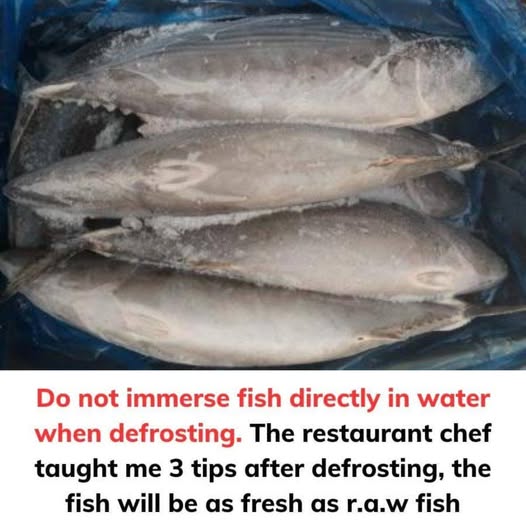ADVERTISEMENT
Follow This Tip and Your Fish Will Stay Fresh Without Losing Its Nutrients
Fish is a delicious and healthy source of protein, omega-3 fatty acids, and essential vitamins. However, when it comes to preserving its freshness, it can be tricky. Improper storage can lead to a loss of nutrients, texture, and flavor, leaving you with a less-than-perfect dish. But don’t worry, there is a simple tip that will help keep your fish fresh while retaining all its nutritional value. Let’s dive into the best ways to store fish and keep it fresh, so you can enjoy all the benefits it has to offer!
Why Fish Can Be Tricky to Store
Fish is highly perishable, which means it spoils quickly if not stored properly. The freshness of fish depends on a number of factors, including how it was caught, handled, and processed. When fish is exposed to air, heat, or improper storage conditions, it can lose its natural moisture, flavor, and nutrients. Additionally, bacteria can grow quickly, leading to the risk of foodborne illnesses.
However, with the right techniques, you can extend the freshness of your fish without compromising its quality. Whether you’ve bought fresh fish from the market or caught it yourself, the following tip will help maintain its nutrients and taste.
The Secret Tip: Use Ice and Vacuum Sealing
The most effective way to store fish and preserve its nutrients is to keep it cold and prevent exposure to air. Here’s a breakdown of the steps you can take:
1. Ice-Cool Storage for Fresh Fish
Fish naturally loses moisture, which can cause it to dry out and become tough if stored improperly. To retain its fresh texture, keep it on ice immediately after purchase or catch. The key is to keep the fish at a temperature just above freezing, which will slow down the degradation process and preserve its nutrients. Here’s how to do it:
- Prepare a Bed of Ice: Fill a shallow pan or bowl with crushed ice. Place the fish on top of the ice, ensuring that the fish is well-covered but not submerged in water.
- Cover the Fish: After laying the fish on the ice, cover it with a damp cloth or plastic wrap to keep the ice from touching the fish
ADVERTISEMENT
ADVERTISEMENT
